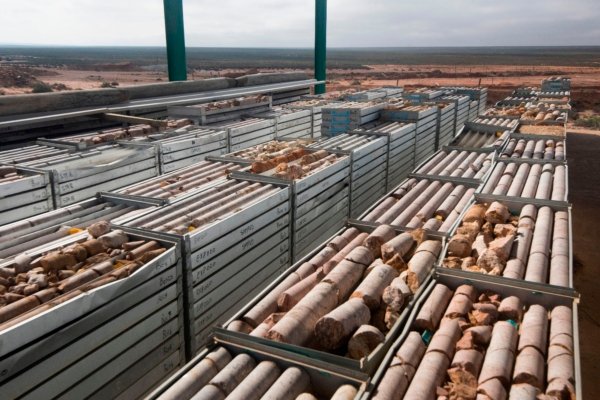Rare earth metals (REE) can be said to be the cornerstone of modern technology, widely used in smartphones, computers, screens, batteries, electric motors, lasers, fighter jets, and chemical catalysts. However, the extraction and recycling of rare earth metals have serious environmental pollution and destruction. A university in Switzerland has developed a method to recycle rare earth metals using enzymes, aiming to reduce the pollution caused by mining and chemical recycling.
Currently, there are 17 commonly used rare earth metals, all of which exist in the form of compounds in natural ores. Due to their very similar chemical properties and distribution in trace impurities, the extraction and separation are challenging and require large amounts of energy and chemicals to complete.
For a long time, most countries have relied on importing rare earth metals processed or refined in China. But as the Chinese Communist Party has used rare earth as a means to threaten other countries, nations are seeking ways to recycle rare earth or find other rare earth deposits to counter the threats from China.
Additionally, the recovery rate of many rare earth elements has been below 1%. For example, rare earth europium (Eu) is used in phosphors in fluorescent lamps and in fluorescent powders in flat panel displays. However, as these items are gradually phased out, market prices have dropped, making their recovery economically unviable. Yet, the rare earth metal content in these wastes is about 17 times higher than in natural ores, posing potential environmental pollution issues, highlighting the importance of developing efficient separation methods.
The Federal Institute of Technology in Zurich, Switzerland, is using special enzymes to extract rare earth “europium” from discarded bulbs, with the purified amount and economic benefits far exceeding existing methods such as solvent extraction and ion exchange, while also effectively recovering fluorescent lamp waste.
Currently, researchers are attempting to expand their method to other rare earth metals. The research findings were published in June in the journal “Nature,” with at least 25 media outlets related to science and technology reporting on it.
The key to this technology lies in adding four sulfur atoms to tungsten (W), molybdenum (Mo), vanadium (V), and rhenium (Re) metals to form “tetrasulfide metal salts,” utilizing their unique redox properties to transfer electrons within other rare earth metals to achieve redox properties.
The use of tetrasulfide metal salts was inspired by the world of proteins. This substance has been found to be a binding site for metals in natural enzymes and has been used as an active material for combating cancer and copper metabolic disorders.
Researchers first extracted phosphors from discarded fluorescent lamps and vacuum-dried them at 200°C to obtain a light gray powder. Upon their tests, these powders were found to contain 0.93 wt% of europium and 12.6 wt% of yttrium.
Subsequently, they combined a solution containing “tungsten tetrathiouranyl anions” (WS42-), trivalent europium ions, and yttrium trioxide (YOX) for the experiment to observe their reaction and confirm the achievement of recovery.
During the process, the originally bright yellow solution containing trivalent europium ions and yttrium ions, after reacting with tungsten tetrathiouranyl anions and undergoing mild external stimuli (such as environmental light or gentle heating), turned deep red with a layer of golden brown precipitate at the bottom.
After centrifuging to separate the solid, drying the red filtrate and solid, resulted in obtaining bright red yttrium powder (along with some golden brown europium powder).
This successful recovery of europium metal was achieved without the need for complex treatment of waste and extracts, yielding high-purity europium and yttrium metals with an astonishingly high recovery efficiency of 99%. This result has energized the researchers.
Victor Mougel, a professor at the Inorganic Chemistry Laboratory at the Federal Institute of Technology in Zurich, shared with the university’s newsroom, saying, “Europe rarely recycles rare earth metals, which makes us urgently need sustainable and simple methods to separate and recover these strategic materials.”
He added, “In the future, we can reclaim europium metals from fluorescent lamp waste that Switzerland usually exports abroad, thus achieving the goal of urban mining and reducing Switzerland’s dependence on imports.”
The first author of the study, doctoral student Marie Perrin, stated, “Existing chemical separation methods are based on hundreds of extraction steps, but they are inefficient, making europium recovery very difficult. This time, we obtained europium through a few simple steps, with the amount exceeding previous separation methods by at least 50 times.”
Professor Mougel further remarked, “Our recovery method currently surpasses all traditional methods of extracting rare earth metals from ores in terms of environmental friendliness and efficiency.”
The researchers have filed a patent for their technology and established a new startup company for future commercialization. Moreover, they are currently working on adjusting the rare earth metal separation process to apply it to neodymium, dysprosium, or other rare earth metals in magnets.

